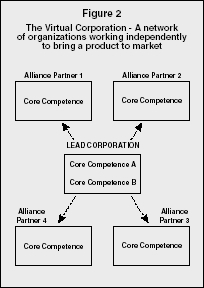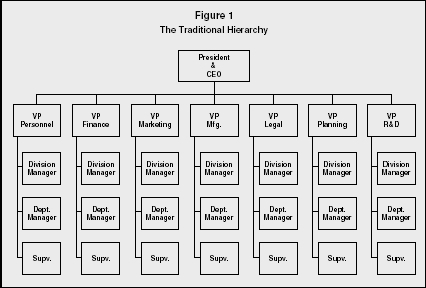In today’s fast-paced and ever-changing business landscape, organizations are constantly seeking innovative ways to stay competitive and agile. One such approach is the adoption of a virtual organizational structure. This type of structure is becoming increasingly popular among businesses of all sizes, especially those in the technology, healthcare, and consulting industries. But what exactly is a virtual organization, and how does it differ from traditional organizational structures?
A virtual organization is one that operates using technology, communication tools, and a network of contractors, freelancers, and remote employees rather than a physical office and traditional employees. This structure allows businesses to be more flexible, efficient, and cost-effective while also providing access to a wider pool of talent from around the world. In this article, we will explore the key features of a virtual organization, its advantages and disadvantages, and how it can help businesses stay ahead in a rapidly changing market.

What is a Virtual Organization?
A virtual organization is an organizational structure that uses technology to facilitate work activities and communication within a company. Virtual organizations are also known as virtual teams, virtual networks, or distributed teams. They are not limited by geography and have members in different locations.
In contrast to traditional organizational structures, virtual organizations are characterized by the use of virtual communication tools such as instant messaging, electronic mail, video conferencing, webinars, and other software. These tools allow teams to collaborate on projects and tasks without being in the same physical space.
Advantages of Virtual Organizations
Virtual organizations offer many advantages over traditional organizational structures. First, virtual organizations offer a more flexible work environment. Employees can work from anywhere, allowing them to work at their own pace and in their own space. This can lead to increased productivity and creativity.
Second, virtual organizations also allow for better communication between team members. Virtual tools such as video conferencing and instant messaging make it easier for teams to stay connected and exchange ideas. This can lead to improved collaboration and decision-making.
Third, virtual organizations can be more cost-effective than traditional organizational structures. By eliminating the need for physical office space, virtual organizations can save money on overhead costs. This can allow companies to focus their resources on their core business functions.
Disadvantages of Virtual Organizations
Although virtual organizations offer many advantages, there are also some potential drawbacks. First, virtual organizations can lead to a lack of face-to-face interaction between team members. This can lead to a decrease in team morale and communication.
Second, virtual organizations can be difficult to manage. Without face-to-face interaction, it can be difficult to monitor progress and ensure that deadlines are met. It can also be difficult to ensure that all members of the team are on the same page and working together.
Third, virtual organizations can lead to a lack of trust between team members. Without direct contact, team members may not trust each other as much as they would in a traditional organizational structure. This can lead to a decrease in productivity and collaboration.
Overall, virtual organizations have many advantages and disadvantages. However, with a well-crafted strategy and the right communication tools, virtual organizations can be successful. By leveraging the advantages of virtual organizations, companies can reduce costs, improve collaboration, and streamline communication.
Frequently Asked Questions – Virtual Organization
A virtual organization is an organization structure in which members are geographically dispersed, use technology to communicate and collaborate, and are organized around a particular business goal or project.
What is a virtual organization?
A virtual organization is an organizational structure that enables members to work together and collaborate on a particular business goal or project, even though they may be geographically dispersed and communicate primarily through technology. This type of organization is also known as a virtual team, virtual group, or virtual network. The members of a virtual organization are typically connected by a combination of digital technologies, such as email, instant messaging, web conferencing, and other cloud-based collaboration tools. In addition, virtual organizations have the potential to be more agile and adaptive than traditional, hierarchical organizations.
What are the benefits of a virtual organization?
A virtual organization offers numerous potential benefits over a traditional organization. One of the main benefits is that the members of a virtual organization have the potential to be more productive since they are not bound by traditional office space and work schedules. In addition, virtual organizations can be more cost-effective since they save on overhead expenses associated with office space, equipment, and staff. Additionally, virtual organizations are more agile and adaptive, allowing them to quickly respond to changes in the market or customer needs. Finally, virtual organizations can create a more diverse workplace, as members can be located anywhere in the world.
What challenges can arise in a virtual organization?
While virtual organizations can offer many advantages, they also come with certain challenges. One of the main challenges is that it can be difficult to effectively manage and motivate a dispersed workforce. It can also be difficult to foster collaboration and teamwork when the members of the virtual organization may never meet in person. Additionally, there can be difficulty in maintaining a consistent culture when virtual teams are located in different parts of the world. Finally, there can be communication challenges if members are using different technologies or have different levels of technical expertise.
How can virtual organizations be managed effectively?
In order to manage a virtual organization effectively, it is important to establish clear goals, roles, and responsibilities for each member. Additionally, communication should be clear and consistent, and it is important to ensure that all members have access to the same technology and resources. Furthermore, it is important to create a culture of trust and accountability, as well as provide feedback and recognition to help motivate members. Finally, it is important to create a sense of community and camaraderie among virtual team members, which can be done through virtual team building activities.
What are some best practices for virtual organizations?
There are several best practices that can be used to ensure a successful virtual organization. First, it is important to establish clear expectations and goals for each member, as well as provide regular feedback and recognition. Additionally, it is important to focus on communication and collaboration, by using the right technologies and providing training as needed. It is also important to be mindful of cultural differences and provide support for team members who may be located in different parts of the world. Finally, it is important to establish trust and accountability, as well as foster a sense of community among virtual team members.

Virtual Organizations
In conclusion, the virtual organization is a modern organizational structure that has become increasingly popular in recent years. This structure allows businesses to operate in a highly flexible and adaptable way, without the constraints of traditional office-based structures. With the rise of digital technologies and remote working, the virtual organization offers a way for companies to remain competitive and agile in today’s fast-paced business environment.
Moreover, the virtual organization is not without its challenges. The lack of face-to-face interaction can make it difficult to build strong relationships and trust among team members. Additionally, communication and collaboration can be more challenging in a virtual environment. However, with the right tools and processes in place, these challenges can be overcome, and the virtual organization can provide a highly effective way for businesses to achieve their goals and stay ahead in a constantly evolving marketplace.




If some one wants to be updated with newest technologies afterward he must be pay a quick visit this
web site and be up to date daily.